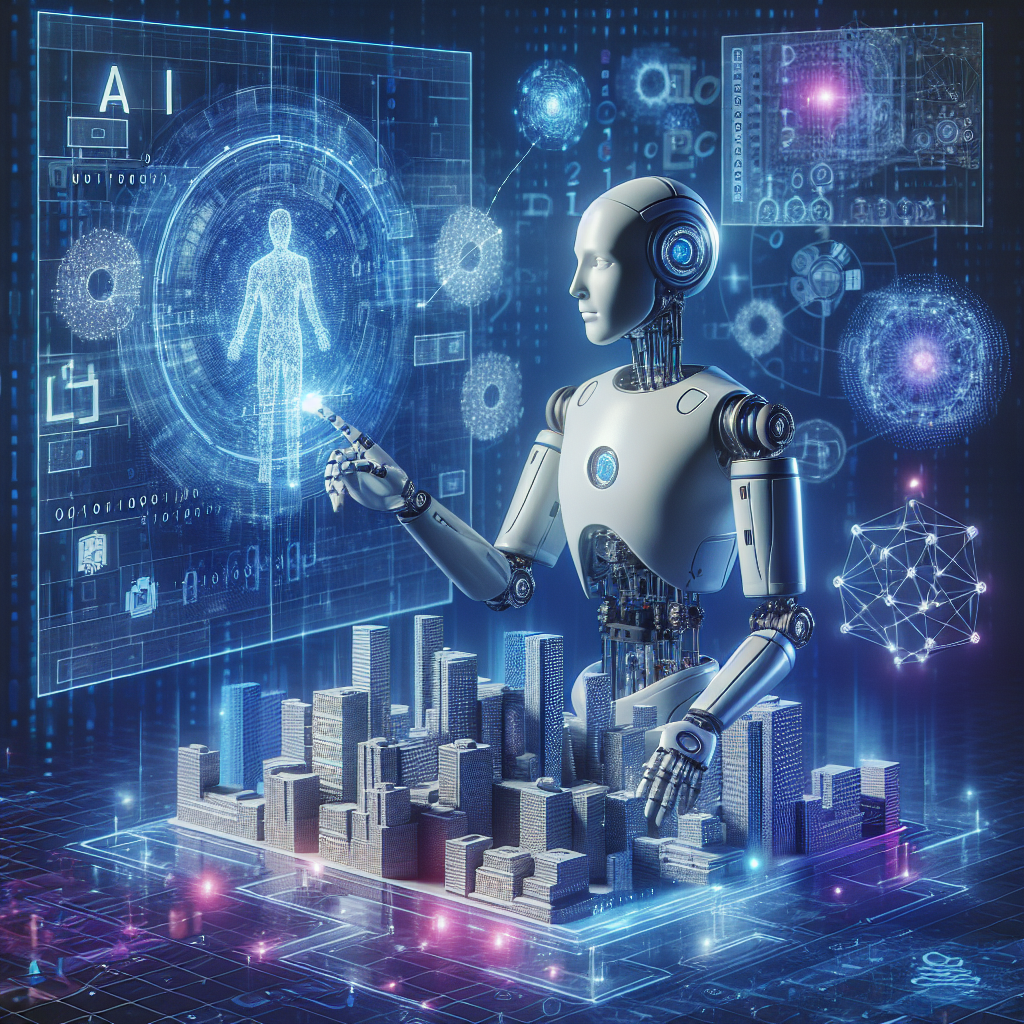The Impact of AI Development on Augmented Reality
In recent years, the development of artificial intelligence (AI) has had a profound impact on various industries, including augmented reality (AR). AR technology overlays digital information onto the real world, creating a more immersive and interactive user experience. With advances in AI, AR has the potential to revolutionize industries such as healthcare, education, retail, and entertainment. In this article, we will explore the impact of AI development on augmented reality and the opportunities it presents for the future.
1. Enhancing User Experience
One of the key benefits of AI development in AR is the ability to enhance the user experience. AI algorithms can analyze user behavior and preferences to personalize AR content in real-time. For example, AI can track eye movements and gestures to adjust the content displayed on AR glasses or smartphones. This level of personalization creates a more engaging and interactive experience for users, leading to increased adoption of AR technology.
Furthermore, AI-powered AR applications can provide real-time translations, object recognition, and voice commands, making interactions with digital content more seamless and intuitive. For instance, AI algorithms can identify objects in the user’s field of view and provide relevant information or recommendations based on the user’s preferences. This level of intelligence and customization is only possible with the integration of AI and AR technologies.
2. Improving Object Recognition
AI development has greatly improved object recognition capabilities in AR applications. Deep learning algorithms can analyze images and videos in real-time to identify objects, faces, and gestures accurately. This technology is particularly useful in industries such as retail, where AR can be used to overlay product information, pricing, and reviews onto physical products.
For example, AI-powered AR applications can recognize a specific product in a store and provide detailed information about its features, pricing, and availability. This level of automation streamlines the shopping experience for customers and increases sales for retailers. Additionally, AI algorithms can analyze user preferences and past purchases to offer personalized recommendations, creating a more personalized shopping experience.
3. Enhancing Training and Education
AI development in AR has the potential to revolutionize training and education. AI algorithms can analyze user interactions in AR simulations to provide real-time feedback and guidance. For example, AI-powered AR applications can simulate medical procedures or engineering tasks and provide step-by-step instructions to trainees. This level of interactivity and feedback accelerates the learning process and improves retention rates.
Furthermore, AI-powered AR applications can adapt to individual learning styles and preferences, providing a personalized learning experience for each user. This level of customization ensures that users receive the information they need in a format that suits their learning style. As a result, AI-powered AR applications have the potential to transform traditional education and training methods by making learning more engaging and effective.
4. Revolutionizing Healthcare
AI development in AR has the potential to revolutionize healthcare by enabling more accurate diagnoses and treatments. AI algorithms can analyze medical images, such as X-rays and MRIs, to identify abnormalities and assist healthcare professionals in making accurate diagnoses. This technology is particularly useful in remote areas where access to healthcare services is limited.
Furthermore, AI-powered AR applications can overlay patient information, medical histories, and treatment options onto the real world, providing healthcare professionals with real-time access to critical information. This level of intelligence and automation streamlines the healthcare process, leading to faster diagnoses and treatments. Additionally, AI algorithms can analyze patient data to identify trends and patterns, helping healthcare professionals make more informed decisions.
5. Creating Immersive Entertainment Experiences
AI development in AR has the potential to create more immersive and interactive entertainment experiences. AI algorithms can analyze user behavior and preferences to personalize content in AR games and experiences. For example, AI-powered AR games can adapt to the user’s skill level and interests, providing a more challenging and engaging experience.
Furthermore, AI-powered AR applications can analyze real-world environments to create interactive storytelling experiences. For instance, AI algorithms can generate virtual characters and objects that interact with the user in real-time, creating a more immersive and engaging narrative. This level of immersion and interactivity is only possible with the integration of AI and AR technologies.
FAQs
Q: What is augmented reality (AR)?
A: Augmented reality (AR) is a technology that overlays digital information onto the real world, creating a more immersive and interactive user experience. AR technology can be used in various industries, such as healthcare, education, retail, and entertainment, to provide personalized and interactive experiences for users.
Q: How does AI development impact augmented reality?
A: AI development has a significant impact on augmented reality by enhancing the user experience, improving object recognition, revolutionizing training and education, transforming healthcare, and creating immersive entertainment experiences. AI algorithms can analyze user behavior and preferences to personalize AR content in real-time, providing a more engaging and interactive experience for users.
Q: What are some examples of AI-powered AR applications?
A: Some examples of AI-powered AR applications include personalized shopping experiences in retail, interactive training simulations in education, accurate diagnoses in healthcare, and immersive storytelling experiences in entertainment. AI algorithms can analyze images and videos in real-time to identify objects, faces, and gestures accurately, providing users with personalized and interactive experiences.
In conclusion, the development of artificial intelligence (AI) has had a profound impact on augmented reality (AR) by enhancing the user experience, improving object recognition, revolutionizing training and education, transforming healthcare, and creating immersive entertainment experiences. With the integration of AI and AR technologies, industries such as healthcare, education, retail, and entertainment have the potential to revolutionize the way we interact with digital content in the real world. As AI development continues to advance, the possibilities for AI-powered AR applications are endless, promising a more personalized, interactive, and immersive future for users.

